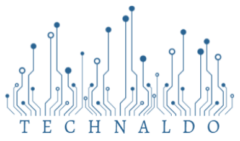Can you think of a computer screen without a graphical user interface or icons? Nowadays, menus, scroll bars, and cursors have become essential components of the modern computer.
A computer will receive data and instructions from a user and will then return information to the user. There is two-way communication between a user and a computer. The software that you purchase will also have a user interface so that you can access and utilize the program.
The functions of graphical user interface (UI) design are to anticipate what users will need to do and make sure that the interface’s parts are simple to find, comprehend, and utilize in order to make those activities easier.
More About Graphical User Interface and Its Elements
The design of a web interface is different from that of a generic graphic user interface and contains unique design elements. GUI allows you to simply navigate, click, and start programs just by seeing them.
Concepts from interaction design, graphic design, and information architecture are all combined in UI. Therefore, it is in charge of creating all the colors, software icons, and basic graphics you see on your computer or mobile device screens.
In order to interact with the hardware, one of the functions of the operating system is to offer a “user interface.” The features of graphical user interface are important to make a GUI as user-friendly as feasible. Each of these is listed below with a brief description.
- Windows: The computer screen that displays the active software.
- Tab: In a window, a tab is a selectable region towards the top that opens a new window.
- Ribbon: Organizes and replaces the program’s file menu and toolbar.
- Toolbar: Typically located at the top of a window, a toolbar has a series of buttons used to activate and deactivate various features.
- Menu Bar: Horizontal bar with menu labels.
- Menus: A list of options or manuals that the menu bar provides to the user.
- Icon: A file, feature, or program that is graphically represented in a small size.
- Toolbar: Software control buttons towards the top of a program window.
Types of Operating Systems

Currently, GUI-based operating systems are the norm. Users prefer GUIs over text-based command-line interfaces like MS-DOS or the shell seen in Unix-like operating systems.
There are four main types of graphical user interface.
| Linux: | All the major components of the UNIX operating system are already built in. Additionally, it has a few other functions. And it has several desktop environments to choose from, like GNOME, KDE, Mate, Cinnamon, etc |
| Microsoft: | It’s no secret that Microsoft Windows is a popular graphical operating system. Developed and promoted by Microsoft. The acronym “win” or “windows” describes it. The most recent release of Windows is version 10, developed by Microsoft. Also, it has several older versions like Windows XP, Windows 8, Windows 7, etc. |
| Android: | It is one of the older versions of the operating system that is still widely used today. Mostly, it is used on cell phones and tablets. The majority of its variants are open-source operating systems. |
| Apple iOS: | One of the most widely used operating systems after Android. It was developed to work with Apple products such as iPhones, iPads, and other tablets, among other Apple products. |
However, the advantages of graphical user interface include simplicity. It looks good and gets anyone interested in working with the machine. Anyone with zero computer experience may nonetheless utilize the machine for its most basic purposes. This effect is due to the GUI.
Tips for Creating a User-Friendly Interface
Knowing your users, their objectives, talents, interests, and habits are the foundation for success. Graphical icons are recognizable visual components, and the Graphical User Interface is what makes them possible (GUI).
You should take the following into account while creating the UI for your app after you have learned about your user:
- With the right use of color, light, contrast, and texture, you can draw the viewer’s eye to certain objects or distract them with others.
- Most of the time, the most effective user interfaces go unnoticed. So, the graphical user interface design should remain simple.
- Using basic UI components makes people more comfortable and speeds up their work. To further improve efficiency, it is recommended to establish consistent patterns in the site’s language, layout, and design.
Conclusion:
Operating systems with a graphical user interface (GUI) like Windows and Mac OS X are simpler to pick up and operate than their command-line counterparts like Unix and MS-DOS. There is also no requirement for users to have prior knowledge of programming languages. Reasons to use them include their convenience and their design.

